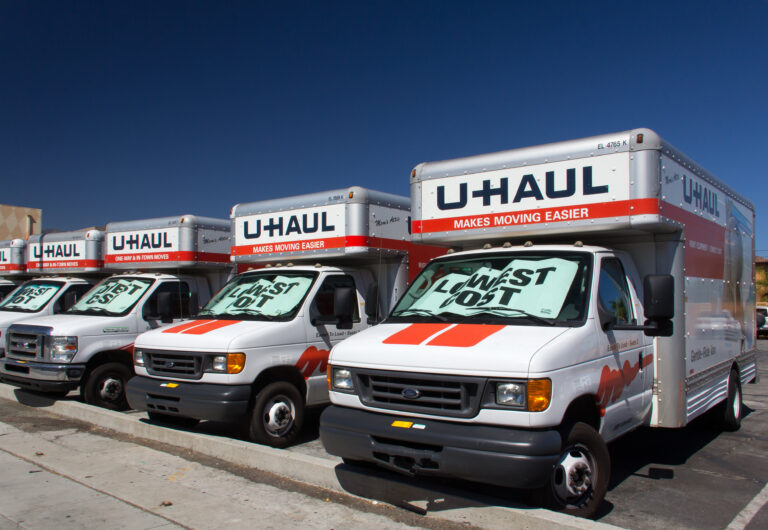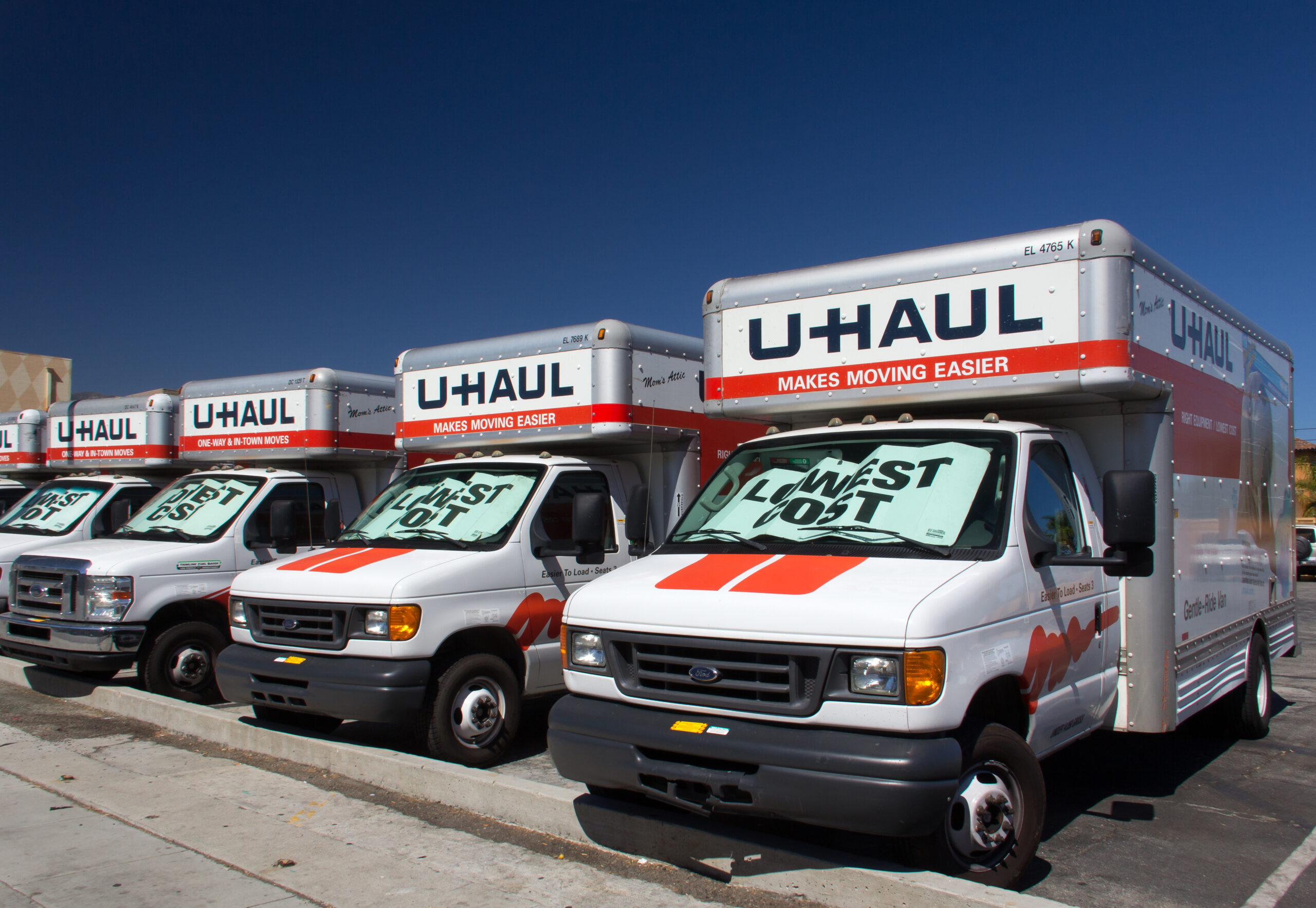
Repurposing Vacant Retail via Conversion to Self-Storage
By: Dan Cromwell, CCIM, Senior Advisor

Kahului, Maui – October 2018: Our direct flight touches down at 11:30 AM HST, Kahului Airport (OGG), 5:32 hours after takeoff from Los Angeles International Airport (LAX). The start of our semiannual visit to our condo in Kaanapali is officially underway as we shift gears into muscle memory: the Mrs. picks up the rental car while I collect my golf clubs and other checked baggage. We load up the rental car and head to our first stop at Costco, where we pick up the basics for the next week. Next stop, the adjacent K-Mart for our non-bulk items – or so we thought…
Instead, we were greeted by an impressive storefront for the very first U-Haul full-service facility on the Valley Isle. Make no mistake, this is a highly visible, “First & Main” retail location that was home to a very successful K-Mart for the previous 24 years, not some converted warehouse in a nearby industrial district. U-Haul’s parent company, Amerco Real Estate Co., purchased the site for $26.8 million on Oct. 17, 2017, from 424 Dairy Road LLC, a company of Hendricks Commercial Properties of Beloit, Wis., according to county property tax and state business records. Factored against the 107,520 sq. ft. store footprint, this represents a price per sq. ft. of nearly $250/sq. ft. It is worth noting that the building sits on 7.3 acres of fee simple land that should attract interest from pad users, especially quick-serve & drive-thru dining options.
*The acquisition of the Kahului facility was driven by U-Haul Company’s Corporate Sustainability initiatives: U-Haul supports infill developments to help local communities lower their carbon footprint. Their adaptive reuse of existing buildings reduces the amount of energy and resources required for new-construction materials and helps cities reduce their unwanted inventory of unused buildings.
By repurposing the former Kmart, U-Haul prevented the use of 360 tons of metal manufacturing and transportation (the same amount of steel used to make 363 passenger cars); avoided 5,730 tons of new concrete pours (enough to create 116 miles of concrete blocks); kept 6,237 tons of construction and demolition debris out of landfills (avoiding 240 dump trucks traveling 5,038 miles in total); and stopped 3,759,443 pounds of greenhouse gas emissions from entering the atmosphere (the same carbon emissions of 288 large SUVs or pickup trucks for one year).
In addition to the remarkable benefits resulting in a reduced carbon footprint as demonstrated in the Kahului K-Mart example, I see these conversions as a viable, stand-alone business model for the following reasons:
- Proven track record with the previous retailers within in-fill retail locations surrounded by established communities with a (presumably) built-in customer base.
- Excellent visibility on a high-traffic retail corridor providing consistent signage reminders for potential customers along with a strong long-term branding opportunity.
- Faster delivery than “ground-up” developments with drastically reduced pre-development costs due to the elimination of site engineering and site preparation work.
- Reduced “cost-of-market-entry” expenses due to the existence of a building shell – note that most big box stores have the volume (ceiling height) necessary to support a mezzanine level.
Needless to say, there are also a number of challenges facing a conversion from retail to self-storage, including the following examples:
- Current zoning does not allow for self-storage. This can often be overcome by obtaining a conditional use permit (CUP) that expands allowable uses to specifically include self-storage.
- Government officials clinging to the hope that the vacant store can attract another retail use so the City can continue to receive sales tax, the lifeblood of many community’s source of income. This false hope often wears thin as the months pass and the negative impact of a high-profile vacant storefront outweighs the harsh reality that there just isn’t another retail user on the horizon, especially if/when the property becomes the target for graffiti taggers.
- NIMBYs – there seems to be prevailing concerns shared by neighboring property owners that the storage facility will generate excess traffic with illegal dumping on nearby sites. These objections can be offset by the fact that the previous retail user-generated more traffic than most self-storage users would create and the on-site security could actually thwart any illegal dumping.
- Unrealistic pricing that doesn’t support a conversion. If the seller adamantly holds out for a “retail” sale price, it won’t pencil out for conversion. Ideally, a developer will be able to purchase the shell for an amount well below the replacement cost.
- Inadequate load capacity. A fundamental rule-of-thumb for storage facilities is a load rating of 125 lbs/sq. ft. Unless the previous retail use was a warehouse club like Costco or Sam’s Club, this could prove to be a dealbreaker if the cost of retrofitting the foundation throws the overall conversion budget out of synch. Ideally, the current owner is able to produce the engineered drawings for the facility; otherwise, an “as-built” inspection/calculation will be necessary before proceeding with an acquisition.
The identification and qualification process should adhere to the same rigorous analysis that one would employ in any site selection assignment in order to understand the underlying site characteristics.
- What are the underlying demographics in the trade area?
- Are these numbers static or is the trade area in a state of transition?
- What about psychographics (tapestry segmentation) – is the make-up of the populace conducive to developing a successful self-storage facility?
- Is the subject building an isolated vacancy or is the overall retail trade area in a state of decline?
- What is the competition, both in terms of existing self-storage facilities and other potential uses imagined by other prospective buyers?
In closing, as the pace of store closings picks up as a result of the impact caused by COVID-19 restrictions, there should be ample opportunities to acquire well-positioned assets priced well below replacement costs. Combined with reduced interest/competition from existing retailers looking to expand, this may be an ideal time for self-storage operators to consider the upside(s) of a campaign focused on conversion from retail to self-storage.
*Taken directly from U-Haul’s corporate website.

Dan brings decades of experience in nearly every component of the CRE to TSAG. He has expertise in economic incentive negotiations, site selection & evaluation, tax increment financing, public/private partnerships, entitlements, acquisitions, dispositions, strategic planning, development services, investment/financial analysis, centroid, and roll-out studies.

